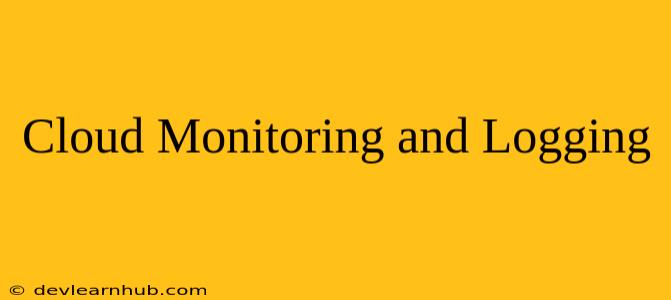In the dynamic realm of cloud computing, where applications and services are constantly evolving, ensuring optimal performance and identifying potential issues is crucial. This is where cloud monitoring and logging come into play, providing the necessary tools and insights to maintain a healthy and reliable cloud infrastructure.
What is Cloud Monitoring?
Cloud monitoring is the process of continuously observing and analyzing various metrics related to your cloud environment. These metrics can include:
- Resource utilization: CPU, memory, storage, network bandwidth.
- Application performance: Response times, error rates, latency.
- Service availability: Uptime, downtime, and service disruptions.
- Security: Firewall logs, intrusion detection events.
By collecting and analyzing this data, you gain valuable insights into the performance and health of your cloud infrastructure.
Why is Cloud Monitoring Important?
- Proactive issue detection: Identifying potential problems before they impact users.
- Performance optimization: Identifying bottlenecks and areas for improvement.
- Capacity planning: Predicting future resource requirements.
- Cost management: Optimizing resource allocation and minimizing unnecessary spending.
- Compliance and security: Ensuring adherence to industry regulations and security standards.
What is Cloud Logging?
Cloud logging is the process of collecting and storing log data generated by your cloud services and applications. Logs contain detailed information about events that occur within your system, such as:
- User activity: Login attempts, file access, API calls.
- System events: Process starts and stops, errors and exceptions.
- Security events: Firewall rules, intrusion detection alerts.
Why is Cloud Logging Important?
- Troubleshooting: Identifying the root cause of issues and resolving them quickly.
- Security auditing: Analyzing log data to detect malicious activity and security breaches.
- Performance analysis: Identifying patterns and trends in application behavior.
- Compliance reporting: Demonstrating adherence to regulatory requirements.
Key Features of Cloud Monitoring and Logging Tools
- Real-time monitoring and alerting: Promptly notifying you of critical events.
- Data visualization and analysis: Providing dashboards and reports for data insights.
- Flexible configuration and customization: Adapting tools to your specific needs.
- Integration with other tools: Seamless integration with cloud platforms, CI/CD pipelines, and other monitoring tools.
- Scalability and reliability: Handling large volumes of data and providing high availability.
Best Practices for Cloud Monitoring and Logging
- Define clear monitoring objectives: Determine what metrics you need to track and why.
- Implement a comprehensive monitoring strategy: Monitor all critical components of your infrastructure.
- Establish alerting thresholds: Set appropriate thresholds for triggering alerts based on your tolerance levels.
- Regularly review and optimize monitoring configurations: Ensure your monitoring tools are effective and efficient.
- Develop a process for log analysis: Utilize tools and techniques for effective log analysis and incident response.
Conclusion
Cloud monitoring and logging are essential components of a successful cloud strategy. By effectively leveraging these tools, you can gain valuable insights into your cloud environment, ensure optimal performance, and maintain a reliable and secure infrastructure.
